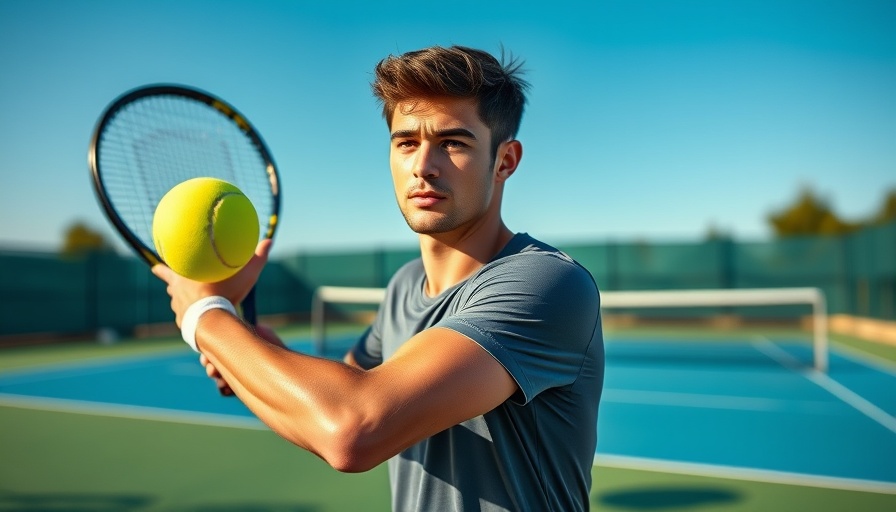
Unlocking Power: The Secret to Strengthening Your Tennis Serve
Have you ever found yourself hitting serves that just don’t deliver the power you want? In the world of tennis, mastering the mechanics of your serve is essential, and a key player in that mechanics is your non-dominant arm—the tossing arm. In the recent video titled "Why you NEED to Drop your tossing arm sooner!", we explore the misconception that keeping your tossing arm up for too long enhances your swing. It doesn’t, and understanding why can drastically change your game.
In 'Why you NEED to Drop your tossing arm sooner!', the video explores key insights about the tossing arm's role in serving—let's dive deeper into its mechanics and implications.
Common Misconceptions: The Tossing Arm Dilemma
Many coaches preach the importance of maintaining a high tossing arm throughout the swing. While their intentions are focused on ensuring players develop good habits, this perspective can actually hinder more than help. When the tossing arm remains extended, it can block shoulder rotation—essential for generating swing velocity. The result? Less power on the ball and increased risk of shoulder strain. This misconception is a common pitfall for amateur players eager to improve their serves.
The Physics of a Powerful Serve: Kinetic Chain Mechanics
In the video, the discussion delves into the science of the kinetic chain—the process where energy is transferred through your body to enhance performance. By dropping your tossing arm at the right moment, you initiate a more efficient shoulder rotation, which ultimately aids in maximizing racket speed and contact power. Imagine a whip—the longer the whip, the more force it can generate. This metaphor perfectly illustrates why adjusting your tossing arm can create a "longer whip" effect, translating to increased serving power and reduced injury risk.
Practical Tips for Mastering Your Toss
Now that we understand the importance of dropping the tossing arm, here are some actionable insights to integrate into your practice:
Focus on Timing: Practice dropping your tossing arm as your racket begins to accelerate upwards. This timing is crucial as too early a drop can result in a premature swing.
Low Toss Technique: Work on maintaining a lower toss height. A low toss will facilitate the seamless drop and allow for better rotational movement.
Visualize the Movement: As you practice, visualize your tossing arm dropping into the kinetic chain, creating a rhythm that flows from your non-dominant arm to your racket.
Future Trends in Tennis Training Techniques
As sports science grows, expect tennis training to evolve with cutting-edge techniques that focus on biomechanics. Coaches are beginning to use technology to analyze players’ movements in real time, allowing for immediate feedback on arm positioning and timing. As a player, embracing these innovations could bring you a step closer to the serving prowess of your favorite pros.
Engagement with the Tennis Community
Finally, don’t underestimate the importance of community in refining your skills. Engage with fellow players, coaches, and mentors to share insights on serving techniques. Consider joining forums or local tennis groups to discuss mechanics—these discussions can illuminate aspects of your technique you might not have considered otherwise.
In conclusion, if you’re serious about enhancing your serve, remember to drop that tossing arm sooner than you may have been taught. The biomechanics of your serve hinge on this adjustment, giving you not only more power but also reducing your risk of injury. Next time you’re on the court, try out these tips, and prepare to astound your opponents with fierce serves!
 Add Row
Add Row  Add
Add 




Write A Comment